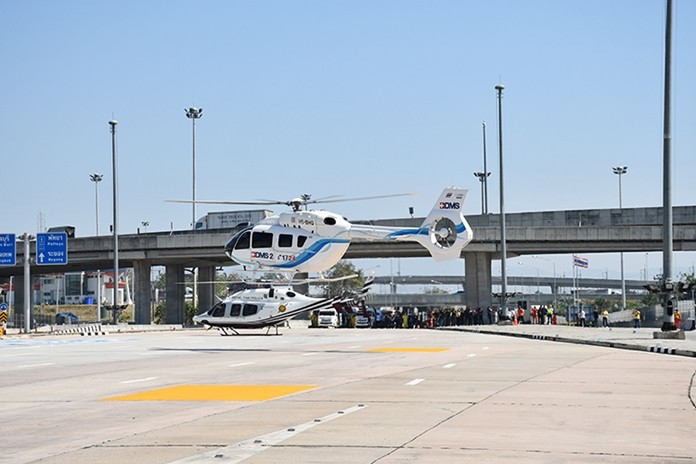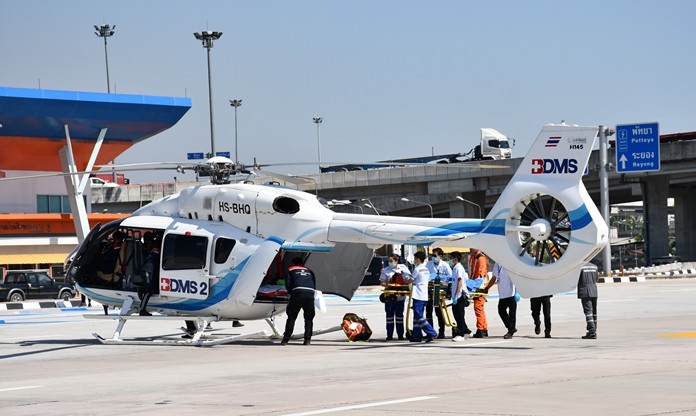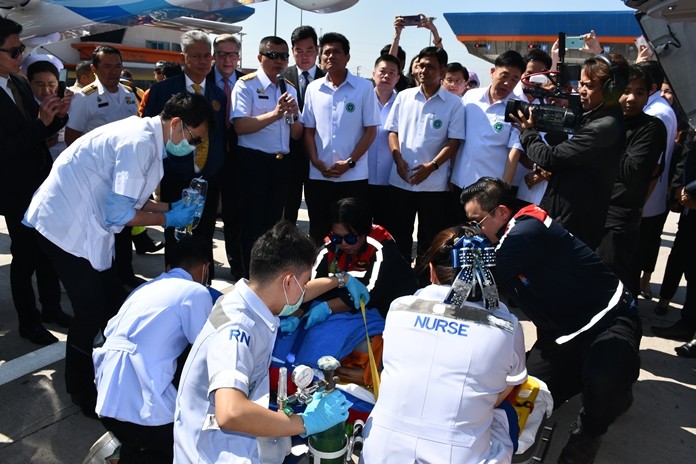
Seven government and private organizations have teamed up to improve medical response to road accidents by flying doctors and paramedics to crash scenes by helicopter.
Deputy Health Minister Satit Pitutacha was joined by 250 officials and executives from the Transport Ministry, National Institute of Emergency Medicine, Department of Highways, Civil Aviation Authority of Thailand, Highway Police, Police Aviation Division, and Bangkok Dusit Medical Services Plc. at the Nong Kham toll gate on Highway 7 in Chonburi to announce the expanded “Sky Doctor” program Dec. 9.
Sky Doctor was a program launched in 2010 by the National Institute of Emergency Medicine to respond with helicopters to accidents on rural roads where a responding ambulance would take too long. The program is now being expanded to urban areas, with Chonburi – the heart of the government’s Eastern Economic Corridor – becoming the test case.
Satit said the launch of the EEC has resulted in more traffic – and more accidents – on the Bangkok-Laem Chabang Motorway. In order to assure businesses and tourists that the government is considering all aspects of EEC development, the Health Ministry decided that better emergency response was needed.
He said the next step would be to work with the Highways Department to designate special lanes for emergency vehicles.
“This cooperation will allow emergency medicine to quickly reach victims of accidents and solve the problem rescue vehicles having a difficult time reaching accident scenes and reduce deaths and disabilities,” Satit said.
However, Satit also said it could take helicopters up to an hour to respond, an eternity in a life-and-death situation.
Dr. Atchariya Pangma, secretary-general of the NIEM, said Sky Doctor this year has flown 59 times and responded to 66 crash victims.

He said the EEC has the highest rate of emergency illness and death from road accidents in Thailand, especially on highways between cities that are time-consuming to access.
Current law didn’t allow for helicopters to land and takeoff on roads and highway areas. So the Health Ministry pushed through the Helicopter Operations Requirements Act of 2019, which takes effect March 1.
Civil Aviation Authority Director Chula Sukmanop said the new law sets out rules for safety standards, personnel, medical equipment and emergency medicine that are in line with international standards. (CPRD)

 |
 |
 |





